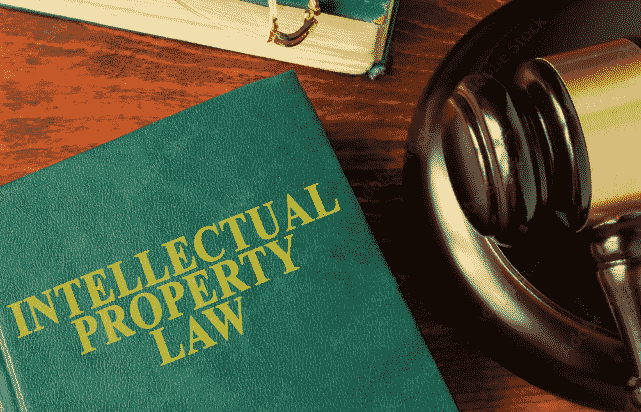Introduction
Fair dealing is a crucial concept in copyright law that allows for the limited use of copyrighted material without the need for permission from or payment to the copyright owner. This doctrine is fundamental in balancing the rights of copyright holders with the public’s interest in accessing and using creative works for purposes such as education, commentary, criticism, research, and news reporting.
The notion of fair use acknowledges that certain uses of copyrighted material contribute to public discourse, innovation, and creativity, thus warranting an exception to the exclusive rights granted to copyright holders. This exception is not absolute but rather subject to specific conditions and considerations, which are typically evaluated on a case-by-case basis.
Fair Dealing: Meaning and Principles
Fair dealing is a legal concept that allows limited use of copyrighted material without the copyright holder’s permission. It is similar to fair use but is more restrictive in scope and is primarily used in common law jurisdictions like India, the United Kingdom, Canada, Australia, and New Zealand. Unlike fair use, which is a flexible doctrine, fair dealing typically specifies specific purposes for which the use of copyrighted material is considered fair.
The meaning and principles of fair dealing can vary slightly between different jurisdictions, but they generally revolve around certain key aspects:
- Purpose and Character of the Dealing: Fair dealing provisions typically specify specific purposes for which the use of copyrighted material is considered fair. These purposes often include research, private study, criticism, review, news reporting, education, parody, satire, and judicial proceedings. The purpose and character of the dealing are assessed to determine whether it aligns with these specified purposes.
- Nature of the Copyrighted Work: The nature of the copyrighted work is also considered in fair dealing assessments. Like fair use, factual works are more conducive to fair dealing than highly creative or fictional works. However, fair dealing provisions often apply to a wide range of works, including literary, artistic, musical, and audiovisual works.
- Amount and Substantiality of the Dealing: Fair dealing analysis looks at the amount and significance of the portion of the copyrighted work used in relation to the overall work. Generally, using a small or insubstantial portion of the work is more likely to be considered fair dealing. However, the significance of the portion used and its relation to the work’s essence or core may also be considered.
- Effect on the Market: Fair dealing considers the impact of the dealing on the market for the original work. If the use competes with or significantly affects the market for the original work, it may not be considered fair dealing. Factors such as whether the use is a substitute for the original work or affects its commercial value are taken into account.
Fair dealing is often subject to interpretation and application by courts based on the specific circumstances of each case. It provides a framework for balancing the interests of copyright holders with the public’s right to access and use copyrighted material for certain purposes deemed to be in the public interest or conducive to creativity, education, and free expression.
SECTION 52
Section 52 of the Indian Copyright Act, 1957, is a crucial provision that deals with certain acts that do not constitute infringement of copyright. It outlines specific situations where the use of copyrighted works is permitted without the authorization of the copyright owner. Here’s an explanation of Section 52:
- Research or Private Study (Section 52(1)(a)): Individuals are allowed to reproduce a copyrighted work for the purpose of research or private study, which includes academic research, personal study, or self-learning.
- Criticism or Review (Section 52(1)(b)): Fair dealing allows the use of copyrighted material for criticism or review, provided it is accompanied by sufficient acknowledgment or citation of the original work.
- Reporting Current Events (Section 52(1)(c)): Copyrighted works can be reproduced or used for reporting current events in newspapers, magazines, or other periodicals, subject to acknowledgment of the source.
- Judicial Proceedings or Legal Advice (Section 52(1)(d)): In the context of judicial proceedings, copyrighted works can be reproduced or used for legal advice, provided it is done in good faith and not for profit.
- Legislative Proceedings (Section 52(1)(e)): Works like speeches, lectures, addresses, and other similar works delivered in public can be reproduced or used in legislative or administrative proceedings.
- Public Libraries or Educational Institutions (Section 52(1)(f)): Public libraries and educational institutions are permitted to make copies of copyrighted works for non-commercial purposes like research, private study, or educational use.
- Disabled Persons (Section 52(1)(zb)): Accessible formats of copyrighted works can be created for the benefit of persons with disabilities, ensuring their access to literary, dramatic, musical, or artistic works.
- Broadcasting (Section 52(1)(za)): Broadcasters can reproduce and communicate to the public any work in their broadcast for the purpose of reporting current events, criticism, or review.
- Parliamentary Proceedings (Section 52(1)(zc)): Parliamentary proceedings can include the reproduction of copyrighted works, including works made for or by the government, for the purpose of reporting such proceedings.
Section 52 serves as a safeguard to ensure that copyright law does not unduly restrict access to knowledge, education, criticism, legal proceedings, or public information. It balances the rights of copyright owners with the public interest in accessing and using copyrighted works for specific purposes that benefit society as a whole.
CASE LAWS
cases related to fair dealing under Section 52 of the Copyright Act, 1957:
- The Chancellor, Masters & Scholars of the University of Oxford v. Rameshwari Photocopy Services: This landmark case involved a dispute between the University of Oxford and a photocopy service in Delhi. The university alleged that the photocopying of academic course packs for students amounted to copyright infringement. However, the Delhi High Court ruled in favor of the photocopy service, stating that the reproduction of copyrighted material for educational purposes fell under the ambit of fair dealing for research or private study as per Section 52(1)(a) of the Copyright Act.
- Eastern Book Company & Ors. v. D.B. Modak & Anr.: In this case, the issue revolved around the reproduction of judgments by legal publishers. The Supreme Court held that copying judicial decisions for commercial purposes did not amount to copyright infringement under Section 52(1)(i) of the Act, which allows the reproduction of judgments by a person who has the right to publish the work.
- University of Delhi v. CUP & Ors.: This case involved a dispute over the sale of photocopied course packs containing copyrighted material. The Delhi High Court ruled that creating course packs by reproducing copyrighted material for educational purposes fell within the scope of fair dealing under Section 52(1)(i) of the Act, provided it was not excessive and was done for the benefit of students.
- Indian Performing Rights Society v. Eastern Indian Motion Pictures Association & Ors.: In this case, the issue was whether the broadcasting of copyrighted music during religious and cultural events constituted copyright infringement. The Bombay High Court held that such use fell under fair dealing for reporting current events as per Section 52(1)(c) of the Act, and therefore, no infringement was found.
These cases illustrate the application of fair dealing provisions in Indian copyright law, emphasizing the balance between protecting copyright holders’ rights and facilitating access to copyrighted material for educational, legal, and public information purposes.
FAIR DEALING IN OTHER COUNTRIES
Fair dealing, also known as fair use in some jurisdictions, is a legal concept that allows for the use of copyrighted material under certain circumstances without the need for permission from or payment to the copyright holder. While fair dealing is a term commonly used in countries like India, the United Kingdom, Australia, and others, fair use is predominantly used in the United States. Here’s a brief overview of fair dealing in other countries:
- United Kingdom (UK):
- Definition: Fair dealing in the UK allows for the use of copyrighted material for specific purposes such as research, private study, criticism, review, news reporting, education, parody, and pastiche.
- Legislation: It is governed by the Copyright, Designs and Patents Act 1988.
- Examples: Critiquing a literary work, using excerpts from a copyrighted book for educational purposes, or quoting a copyrighted song in a news report may be considered fair dealing.
- Australia:
- Definition: Australia’s fair dealing provisions cover similar purposes as the UK, including research, study, criticism, review, parody, satire, reporting news, and professional advice.
- Legislation: Fair dealing is outlined in the Copyright Act 1968.
- Examples: Quoting a passage from a copyrighted work for criticism or review, using copyrighted material for educational purposes, or creating a parody of a copyrighted song are instances of fair dealing.
- Canada:
- Definition: Fair dealing in Canada permits the use of copyrighted material for purposes such as research, private study, criticism, review, news reporting, education, parody, and satire.
- Legislation: It is governed by the Copyright Act, R.S.C., 1985, c. C-42.
- Examples: Quoting copyrighted material in a research paper, using excerpts from a book for educational purposes, or creating a parody of a copyrighted film are considered fair dealing.
- New Zealand:
- Definition: New Zealand’s fair dealing provisions cover similar grounds as other Commonwealth countries, including research, private study, criticism, review, news reporting, and parody.
- Legislation: Fair dealing is outlined in the Copyright Act 1994.
- Examples: Using copyrighted material in a news report, quoting excerpts for criticism or review, or creating a parody of a copyrighted work may fall under fair dealing.
Each country’s fair dealing provisions have specific criteria and limitations, and the interpretation of fair dealing often involves a balancing act between the rights of copyright holders and the public interest in accessing and using copyrighted material for certain purposes
Also Read:
Rights of undertrial prisoners in India
How To Send A Legal Notice In India




